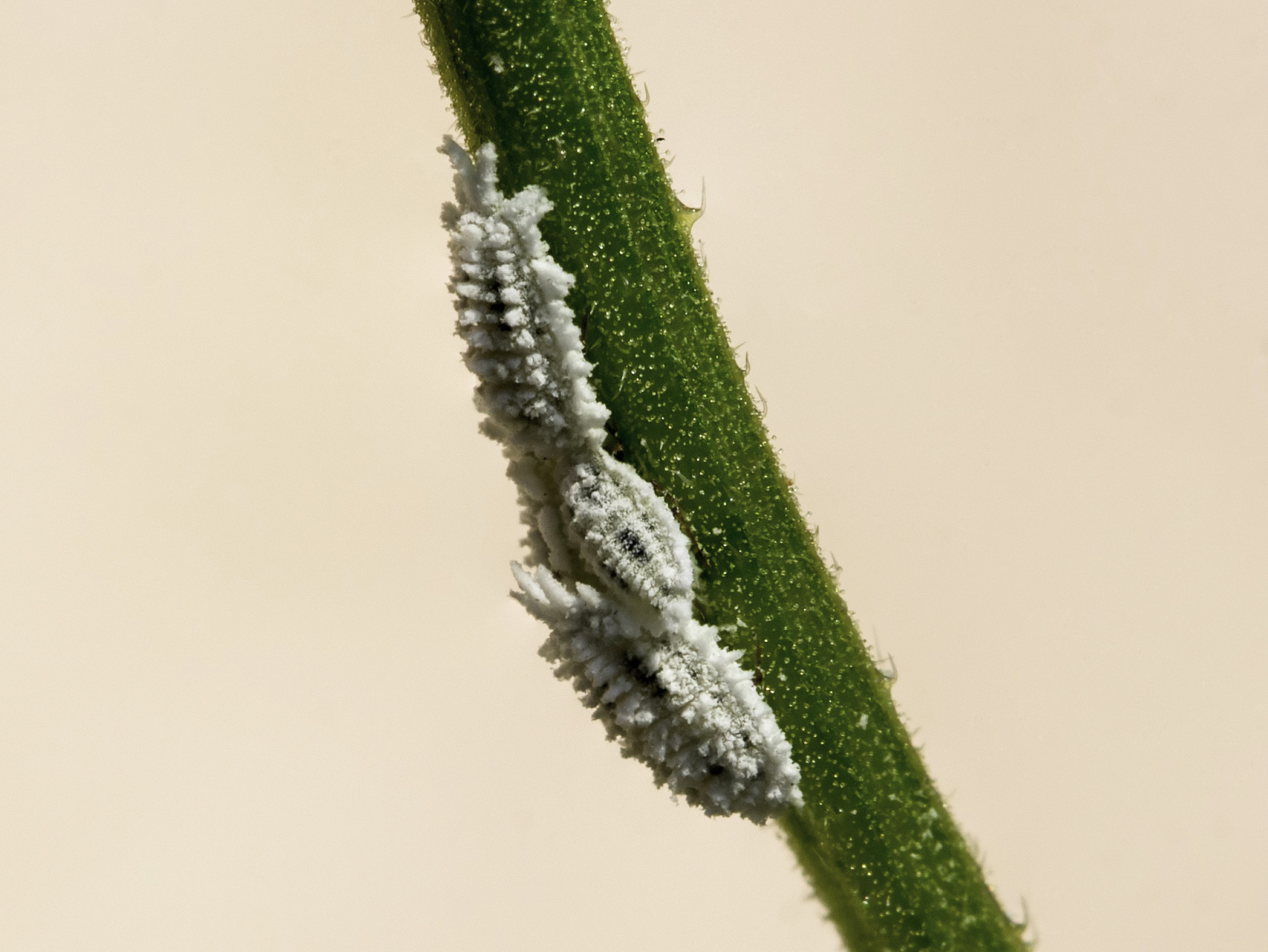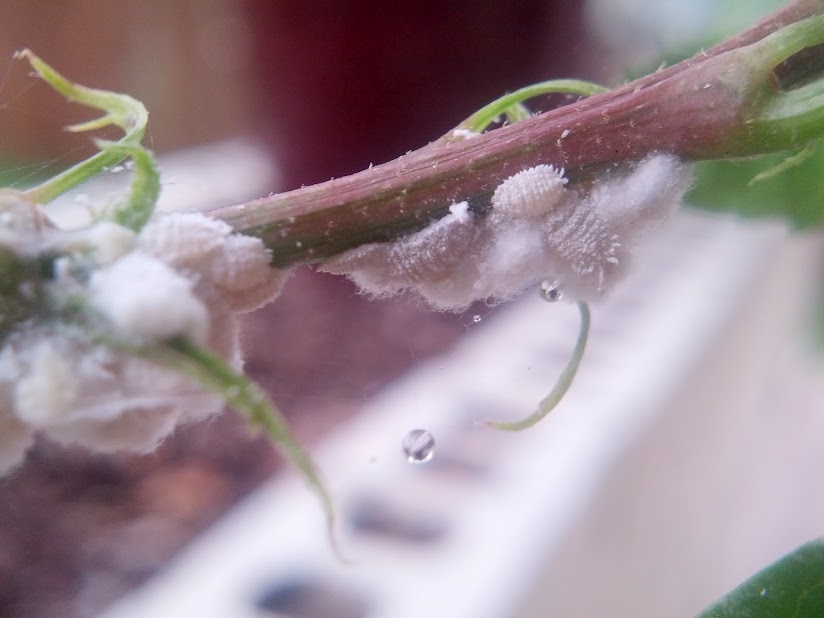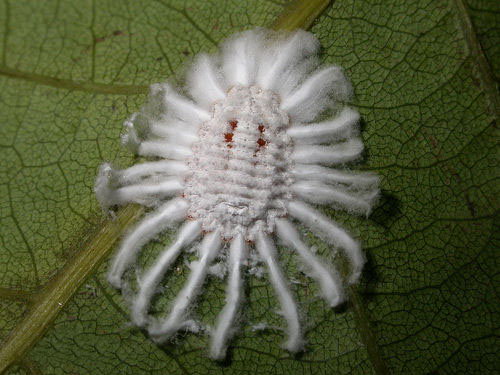Mealybugs attach their piercing and sucking moutparts to the base and stem of new foliage. Preferring shade, they are often located under the leaves. These insects begin their activity at the beginning of spring and remain active throughout the year. It is possible to have as many as 5 generations of adult insect production in a year. During the cold season, they hibernate under bark or in other protected/shaded areas.
The presence of mealybugs also attract ants, wasps, and other insects that feed on them.
Trees and Plants at Risk
This insect is commonly found on many types of fruit and vegetable vegetation. It generally targets new growth on plants and will quickly infest adjacent plants if not treated quickly.


Treatment Strategy
Early detection is key in managing mealybugs.
Neem oil may be considered and requires repeat spray application every 14 days for a maximum of 3 applications.
During heavy infestation, they can cause serious damage to trees and plants. For heavy infestation, we recommend both soil or trunk injection treatment and also spray application of both contact and systemic pesticides.
For tall trees, systemic insecticide is recommended.
Contact Us
Do you suspect this insect may be attacking your trees or palms? Contact us and tell us about the issue and we’ll do our best to help. [email protected]

